#Museu Arte Contemporanea Serralves
Photo
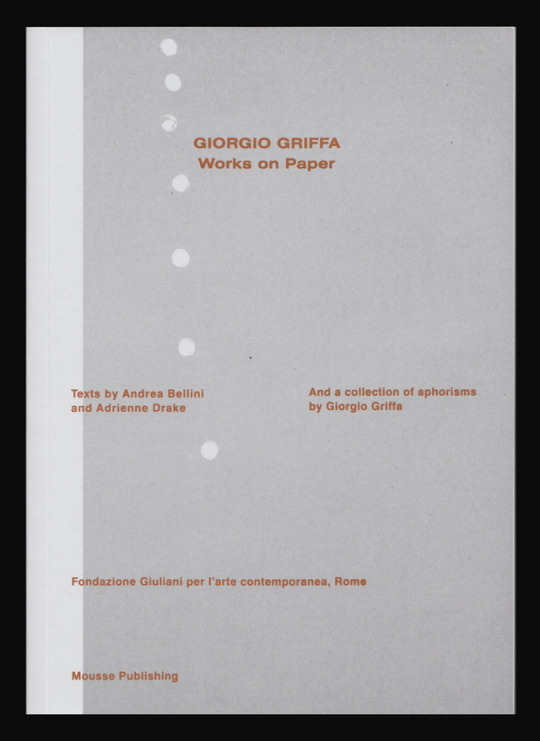
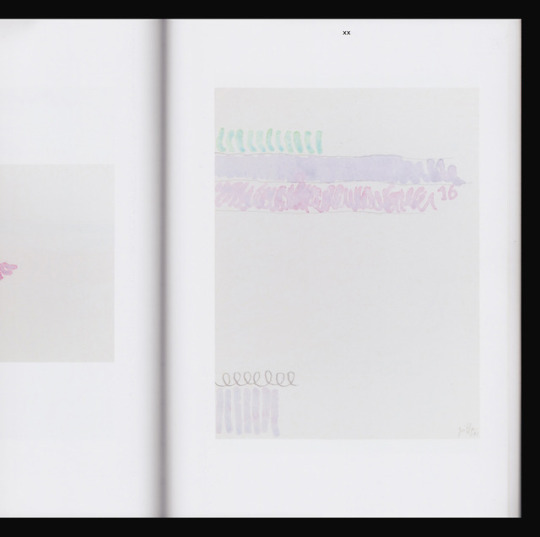
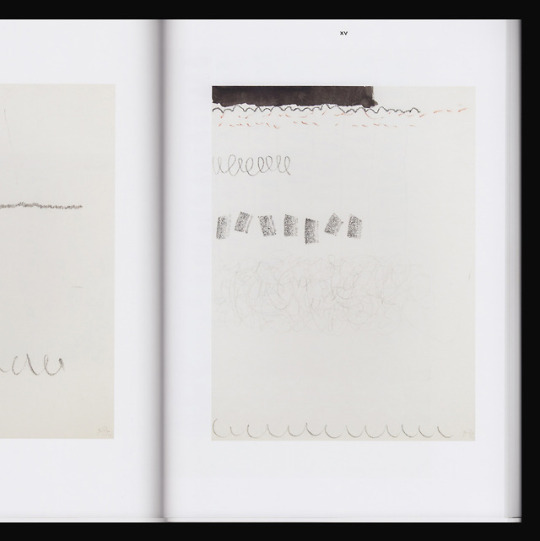

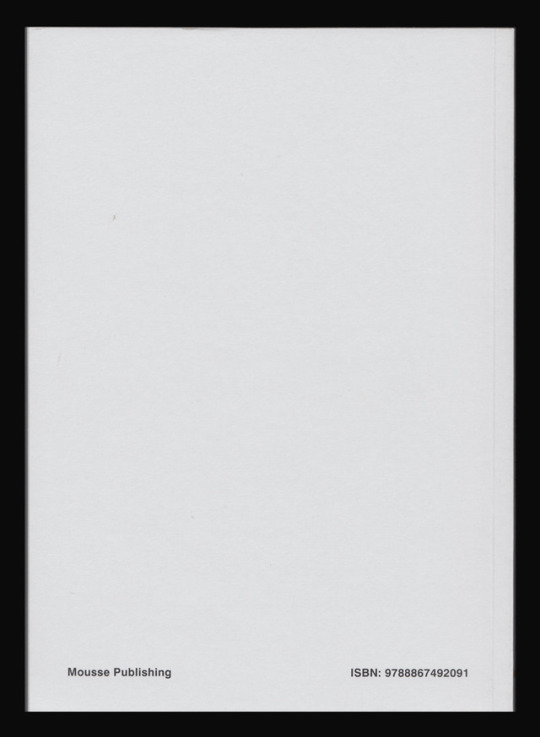
Giorgio Griffa: Works on Paper, Edited by Andrea Bellini, Texts by Andrea Bellini, Adrienne Drake, and Giorgio Griffa, Mousse Publishing, Milano, 2016. Extension of the book Giorgio Griffa: Works 1965-2015, Published on the occasion of the cycle of exhibitions dedicated to the work of Giorgio Griffa at Centre d’Art Contemporain, Geneva; Museu de Arte Contemporanea de Serralves, Porto; Bergen Kunsthall; and Fondazione Giuliani, Roma in 2015 and 2016
#graphic design#art#drawing#pattern#differentiated repetition#exhibition#catalogue#catalog#cover#back cover#giorgio griffa#andrea bellini#adrienne drake#mousse publishing#centre d'art contemporain geneva#museu de arte contemporanea de serralves#bergen kunsthall#fondazione giuliani#2010s
23 notes
·
View notes
Photo

2020.2.6 Porto, Portugal Day2 Casa da Musica / Rem Koolhaas Museu de Arte Contemporanea de Serralves / Alvaro Siza #architecture #landscape #museudeserralves #alvarosiza #casadamusica #remkoolhaas #oma #porto #portugal (Museu de Arte Contemporânea de Serralves) https://www.instagram.com/p/B8SSILgicT2/?utm_medium=tumblr
0 notes
Text
Portugal- Things To Know Before Your Next Adventure
CASA ROSE & JOE'S GARAGE - LAGOS, PORTUGAL
If you are a budget traveler or backpacking Europe, then Lagos can be actually an inexpensive piece of heaven. Casa Rosa is also the region for overall sustenance, whilst Joe's Garage can be somewhere to go ahead.
Casa Rosa asserts to function as a sanctuary for Back Packers at Lagos. The further your vacation, the further you realize that such promises are hardly ever correct. Together with Casa Rosa, but I will affirm the promise remains authentic. The gap at the walls functioned heaping mounds of this foodstuff of this afternoon to get very economical rates. This was packaged with backpackers that left it a really fantastic spot to meet up with folks and swap war tales.
I've not gone around Portugal for a few decades, therefore I must join a caveat to advocating Casa Rosa. After I visited Casa Rosa from the 1990s, it had been possessed by means of a number Brits, that was allegedly hoping to offer it. I fell in two in the following years plus they're there but trying to offer it. Whether that occurred, '' I can not truly say keep in your mind there might be considered a fresh proprietor or even the spot might well not exist in any way.
Joe's Toilet
In most cities or towns, there's just one"Under Ground" night time area you only need to go to. Clearly, you first must discover about any of it and figure out at which it really is. Folks"in the know" an average of greatly safeguard this info. For decades, Joe's Garage was such an area in Lagos.
The urge apparel for Joe's Garage can be really a bathing lawsuit, T-shirt and reverse flops. The area seems to don't have any venting at all and can be remarkably hot. Putting a negative into a favorable, the proprietors possess a powerful water treatment. Water slides out from this ceiling, tails of exemptions to the water and wall firearms professionally targeted by bartenders. In the event that you had been eyeglasses, then simply make them in house.
Joe's is available from approximately ten on the day prior to the hour that you stagger out. It's on Rua Primiero p Mayo, however, tend not to bother creating down that. The spot contains little signage you may possibly be standing ahead of and fully overlook it. The very optimal/optimally method to get this will be always to stick to exactly the late-night audience while they start submitting from those pubs around midnight.
Logos can be the perfect place for funding travelers. The town has shores, nightlife and is more economical. Love!
PORTRAIT - LISBON PORTUGAL
Lisbon can be really a relaxed metropolis, filled with favorable individuals that attempt to talk and stop. However, their metropolis has been falling into decay and renovation turned into important.
Present several years has viewed Lisbon get started to completely clean up its own act. Web hosting the 2004 European Soccer enthusiast centered the metropolis and attracted about a departing brand new period.
Down Town Lisbon was trapped at some time. Restricted, cobbled roads turned into also a throwback into the 18th century, even several thousand kilometers out of the mid-century, cosmopolitan capitals of Europe.
The catastrophic earthquake of 1755 contributed to brand new town preparation, a lot which is present for the afternoon. The urgent renovation was required to maintain Portugal's backing ready to go. A brand new infrastructure coined the beginning of a fresh age.
The beautiful fragrance of ingesting hails out of the neighboring restaurants and also drifts enticingly through the sq, causing your own appetite.
The square-foot supplies a focus for all their neighborhood group. The folks assemble and swap dialog whilst kiddies play and dance with, contributing to the overall din.
Now, Lisbon reaches the dawn of the new era and excited to advertise in a fresh universe of tourism.
East of this metropolis, Alfama can be still a heritage of twenty-five occasions, keeping a lot of the older structure. After Christian success while in the war that is spiritual, the Romanesque cathedral was developed to the web site of the mosque in 1147.
The Praca do Comercio sits in the Border of this shore. The quite sq brings the pigeons en-masse and appears up to and including magnificent archway. The midsize is laced with stores; hectic buyers dart in you to one other, trying their own deals.
For a long time, Lisbon sat teeming with construction internet sites and rubble, excited to recover its standing among the main telephoning interfaces of Europe.
Catering solely for people who have a head for heights, even the lift offers unmatched perspectives of their roads under. Even the very small men and women below revolve around the crowded back-streets, all together to move.
A notable 13th-century feature could be your increased window, whereas the top amount of this gorgeous 14th-century cloister affords fantastic viewpoints.
Now it really is Portugal's next city and also a booming industrial center.
Under the Se could be your hill-side Barredo quarter, apparently unchanged since ancient times. This contributes to the riverside quarter, '' the Ribeira, its own homes adorned with tiled or pastel-painted facades. The district has been being revived, bringing clubs and restaurants.
Sights near the lake incorporate the Palacio da Bolsa, the metropolis's stock exchange, assembled in 1842. Its highlight would be that the Arabian Place decorated in the Manner of the Alhambra. Close is your 14th century Sao Francisco church. Its inside is covered in weathered and stained timber. The church tower, even in seventy-five m provides superb viewpoints.
It poses temporary exhibitions from the Art-deco Casa de Serralves, also its own artwork set, by the 1960s into the current, at the Modernist Museu de Arte Contemporanea, made by Alvaro Siza Vieira.
The industrial hub of this city and also the Baixa ("reduce") district bring shoppers that are fashionable. Additionally from the Baixa is your vibrant Bolhao marketplace. The majority of the tourist spots, but should be seen at the elderly river-side quarters.
0 notes
Photo








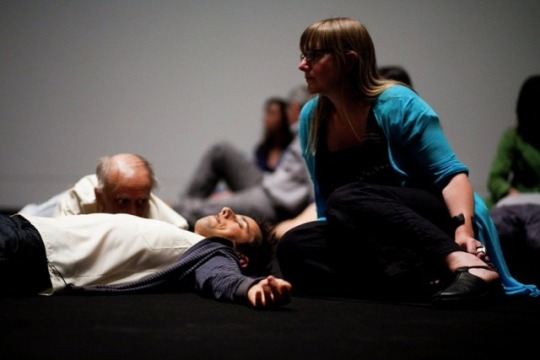
WORLD OF INTERIORS, 2010 performance by Ana Borralho & João Galante
World of Interiors is a performance-installation with people lying on the floor, eyes closed, rather motionless.
The 15 performers are whispering the angry and poetic words of the playwright Rodrigo Garcia. The audience has to approach the performers bodies to understand what they are saying. "World of Interiors" explores the border / relationship between spectators and the piece; it seeks to integrate the audience into the time and space of the performance and to identify the tensions between art and the codes that govern society. In this installation/performance, the spectator can enter and leave the performance space at will. He or she has the liberty to define how long to remain inside, whether to stay with one performer or move on to another one. Each performer has a different collage of texts to say. There is a score for the texts. They are part of a collective partition, with moments of silences, chorus and cannons.
"World of Interiors emerges out of Ana Borralho and João Galante’s unique parcours in the world of performing arts. Over the years the two artists have developed their research into a consistent and mature body of work; always hybrid, it traverses the boundaries of visual and performing arts." in Alkantara Festival 2010 program
Concept, Artistic direction, Light and Set design Ana Borralho & João Galante
Text fragments of the theater writings of Rodrigo Garcia
Translation and dramaturgic collaboration Tiago Rodrigues
Performers (Lisbon-Portugal) Ainhoa Vidal, Alina Bilokon, Antonia Buresi, André Duarte, Célia Jorge, Chris Scherer, Elisabete Fradique, Laurinda Chiungue, Luís Godinho, Maria Manuel Marques, Pedro Frutuoso, Pietro Romani, Renata Portas, Ricardo Barbosa, Rui de Sousa
Artistic consultancy Fernando Ribeiro
Executive production Ana Borralho, Mónica Samões, Miriam Vale
Production casaBranca
Co-production alkantara festival, Museu Colecção Berardo, Útero - Associação Teatral / Espaço Land, CNDC - Centre National de Danse Contemporaine Angers
Artistic residency Centre National de Danse Contemporaine Angers / França
Support Atelier Re.Al, IEFP, Grande Cena, TNT- Manufacture de Chaussures, Bordeaux / França
Thanks Rodrigo Garcia, Mateo Feijó, Carlos Marquerie, Alexia Larrarté, Atelier Re.Al, Pedro Joel, Nec - Núcleo de Experimentação Coreográfica, Margarida Marecos, Walter Lauterer, Flávio Rodrigues, Lara Pires, Ana Margarida Carvalho, Roman Perona, Rui Dâmaso
Support for the presentation in Lisboa Départs, Culture Programme of the European Union
casaBranca is a structure funded by Ministério da Cultura / Direcção-Geral das Artes
video credits from live performance in Lisbon Helena Inverno and Verónica Castro (Volante)
photo credits Vasco Célio
performance duration: 2 hours
vimeo
youtube
ABOUT WORLD OF INTERIORS
Echoes of an anonymous shadow by Fernando L. Ribeiro
Taking its title from an interior decorating magazine, “World of Interiors” turns this reference inside out by suppressing any vestige of a décor that might encourage the autonomy of its users. Human presence is communicated by successive dislocations of body and voice and is passed orally from sender to receiver. Complete understanding requires an interminable de-multiplication of muted words that the receiver perceives as subliminal echoes of his conscience. Just as space is filled with voices that are strange to its bearers – prosthetic and inanimate bodies – our consciousness is put into action through ventriloquism, inherent to citizens who make use of anonymity as a system of camouflage. The fairy-like qualities of verbal discourse do not match the somber neutrality of the body and, in this way, the intensity of the Other voice, interior, that to the exterior world materializes as a suspicious shadow about to be definitively silenced.

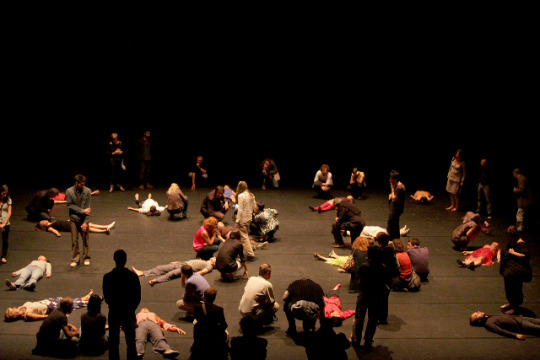
World of Interiors TOUR
2010
Berardo Museum Collection / alkantara Festival, LISBON, PORTUGAL
Actoral Festival, MARSEILLE, FRANCE
Maria Matos, LISBON, PORTUGAL
Serralves Museum / Exhibition: To the Arts Cityzens, OPORTO, PORTUGAL
Mostra SESC de Artes 2010, S. PAULO, BRAZIL
2011
Verão Azul Festival LAGOS, PORTUGAL
TNT, Manufacture des chaussures, BORDEAUX, FRANCE
PQ11, Prague Quadriennal of space and performance, PRAGUE, CZECH RÉPUBLIQUE
Escrita na Paisagem Festival, ÉVOEA, PORTUGAL
Plataforma, Espaço do Tempo, MONTEMOR O NOVO, PORTUGAL
Todos Festival, LISBON, PORTUGAL
Fast Festival, Festival Internazionale della creazione contemporanea, TERNI, ITALY
2012
Escena Contemporánea Festival, MADRID, SPAIN
Panorama Festival, RIO DE JANEIRO, BRAZIL
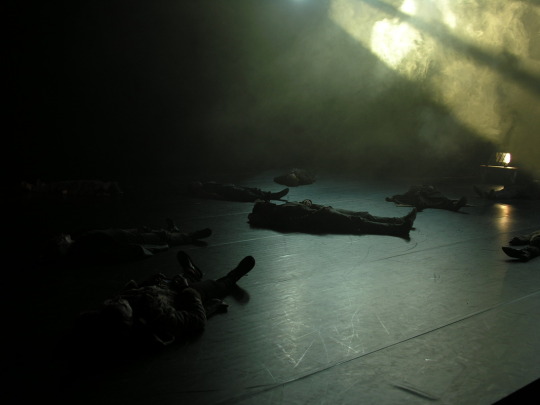

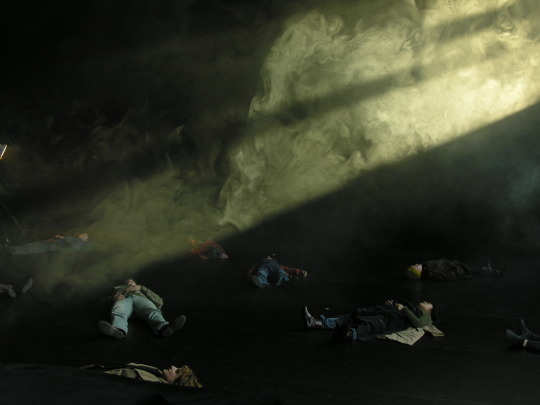
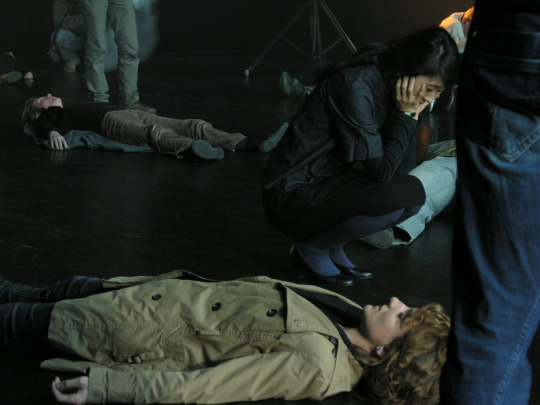

#performanceart#performance#nodance#theatre#anaborralho&joaogalante#ana borralho & joao galante#rodrigo garcia#rodrigogarcia
0 notes
Text
Exposició | Juan Uslé | Unsettled | Barcelona Gallery Weekend | Galeria Joan Prats
JUAN USLÉ. Unsettled
Exposició
JUAN USLÉ | Unsettled
10/10/2019 - 28/12/2019
Barcelona Gallery Weekend
Galeria Joan Prats
Inauguració: 10/10/2019, a les 19.00h
Xerrada: Juan Uslé & comisari Javier Sánchez Martínez
11/10/2019, a les 18.30h (esp + eng)
Quarta exposició individual de Juan Uslé a Galeria Joan Prats, titulada 'Unsettled', que recull les seves últimes pintures i fotografies. 'Unsettled' significa inestable però també variable, inquiet, alguna cosa que inclou a contraris, o una paradoxa. En les pintures d’Uslé les franges de color fluctuen, no tenen un inici i un final definit, i remeten al pas del temps, les hores, les estacions, els paisatges que canvien, com Bèrnia, serralada situada al sud-est de la Península Ibèrica , un lloc d'inspiració per Uslé, entre molts altres.
En les pintures d’Uslé les franges de color fluctuen, no tenen un inici i un final definit, i remeten al pas del temps, les hores, les estacions, els paisatges que canvien, com Bèrnia, serralada situada al sud-est de la Península Ibèrica , un lloc d'inspiració per Uslé, entre molts altres. El treball de Juan Uslé reflexiona sobre les possibilitats de la pintura. En paraules seves: “Parlant de pintura, jo també parlaria del seu tremolor, de la seva ‘no fixació’, del seu recorregut o, millor encara, del que entenem com a desplaçament.” Formades per pinzellades repetides, encara que mai idèntiques, les seves obres es caracteritzen pel moviment i el ritme, i invoquen l'entorn que li envolta, i alhora, l'energia de les pulsions del cos. Uslé crea un idioma pictòric on es barregen aspectes formals o metalingüístics amb la seva experiència vital, a més de les al·lusions al temps i al propi procés de creació. Segons Juan Uslé: “El temps és allò que ens queda. Jo ho concebo com una superfície horitzontal on es diposita i transfiguren successos del passat i del futur. Moltes de les meves obres petites semblen prolongar-se, estendre's en l'espai. Suggereixen un anomenem-li paisatge o espai de múltiples horitzons juxtaposats.”
A l'exposició, Uslé presenta formats petits, que creen una relació de proximitat i intimitat al costat d'obres de gran format, la dimensió més gran amb què ha treballat i que va iniciar el 2017. Les obres petites s'organitzen en famílies, i parlen de la repetició, però també contenen individualment una identitat pròpia. L'exposició es completa amb dues fotografies, també de dues dimensions molt diferents. Fan al·lusions a la pintura i invoquen al recolliment i l'emoció del descobriment. Interpel·len, com les seves pintures, a la nostra capacitat de veure, pensar, percebre i sentir.
Juan Uslé (Santander, 1954), viu i treballa entre Nova York i Saro (Cantàbria). Ha presentat la seva obra a la 51 Bienal de Venècia (2005), a la Documenta 9 de Kassel (1992), i a la II Bienal d’Istambul (1991), i va obtenir el 2002 el Premi Nacional d’Arts Plàstiques. La seva obra pictòrica i fotogràfica s’ha exposat en nombrosos museus i centres d’art com el Kunstmuseum de Bonn, el Centro Galego de Arte Contemporanea de Santiago de Compostela (2014); Es Baluard Museu d’Art Modern i Contemporani, Palma de Mallorca, Marta Herford, Alemania (2010); Kunsthalle Emden, Alemania (2009); MUDAM, Luxemburg, ARTIUM, Vitoria (2008); CAC, Màlaga, Domus Artium, Salamanca, Fundació La Caixa, Barcelona (2007); Salvador Dalí Museum, St Petersburg, Florida, Alburquerque Museum, New Mexico (2006); Fundación Marcelino Botín, Santander, IMMA Irish Museum of Modern Art, Dublín (2004); MNCARS, Madrid (2003); Museum Morsbroich, Leverkusen, Alemania (2002); Museo Serralves, Porto (2001). Ha presentat recientment una exposició d’obra sobre paper titulada ‘Notes on SQR’ al MACE d’Eivissa.
És un plaer presentar la quarta exposició individual de Juan Uslé a Galeria Joan Prats, titulada 'Unsettled', que recull les seves últimes pintures i fotografies. 'Unsettled' significa inestable però també variable, inquiet, alguna cosa que inclou a contraris, o una paradoxa. En les pintures d’Uslé les franges de color fluctuen, no tenen un inici i un final definit, i remeten al pas del temps, les hores, les estacions, els paisatges que canvien, com Bèrnia, serralada situada al sud-est de la Península Ibèrica , un lloc d'inspiració per Uslé, entre molts altres.
+ informació
.
https://1.bp.blogspot.com/-PDXRbrJ7xN0/XZcplmAUZWI/AAAAAAAAB0Q/VgDfI36Fgn8Xwhq-vmTSPzF4MonUvy1iQCLcBGAsYHQ/s640/juan.jpg http://www.artneutre.net/2019/10/exposicio-juan-usle-unsettled-barcelona-gallery-weekend-galeria-joan-prats.html #Art #Catalunya #Barcelona #PaisValencià #Balears #Andorra #Occitània #Alguer #AgendArt #Valencia #Palma
0 notes
Link
A fundação diz que Vergne “traz uma visão artística sólida e inspiradora não só para o Museu e para a Coleção“. Philippe vai deixar de ser diretor do MOCA, Museu de Arte Contemporânea de Los Angeles.
0 notes
Text
Porto Travel Guide
When you consider Portugal, you normally think of sun-drenched beaches, high-end hotels and family-friendly beach resorts. And, if you have become aware of Porto at all, it is most likely because of their football group.
However, the city's historic centre is a UNESCO World Heritage website filled with picturesque townhouses, mercantile warehouses, cobbled streets and wide-open boulevards.
Built along the banks of the Douro River estuary, the city is filled with hills and is blessed with a consistent cooling breeze, which is most welcome throughout the sweltering summers, when temperatures can peak at 40 degrees.
You ought to start your city expedition at the Ribeira. This area lines the river and is the best entry point into the old town. The best way to take in this bohemian city is strolling these well-trodden streets.
Staircases climb the city hills and churches hold on to every corner and crevice. Porto City Guide appear from nowhere dishing out the best wine in Portugal in addition to ultra-fresh seafood. The Mercado do Bolhao is a standard market of fruit, veggies, meat and fish and is a real sight for soar eyes.
The Modern Art Museum at Serralves is packed to the brim with art. This new Museu de Arte Contemporanea and the Casa da Musica display the very best in modern art and efficiencies, but the buildings themselves are masterpieces in themselves. Alvaro Siza and Rapid eye movement Koolhaas have excited architectural connoisseurs.
It's not just architecture that is of note in Porto. The city has some of the finest restaurants in Portugal. Both the meat and fish are fresh and flavour-some, however anticipate the food to be quite heavy and portion sizes to be rather generous. Fortunately however, you will not pay heavily.
Hotels in Porto resemble the food, really budget friendly. They tend to be very appealing too, especially if they are at the upper end of the scale and situated in the old town location. The majority of the hotels consist of breakfast in the room rate and some offer other centers such as pool, medical spas and gyms. Roof-top pools are especially appealing for summer season stays, as a method of handling the extreme afternoon heat.
Some of the less expensive hotels are located in the suburbs in more modern-day buildings that do not have the character of the old town. Nevertheless, the location should not be an issue as the city's metro system is exceptionally advanced.
0 notes
Photo

BACK IN THE BOOKSHOP: GIORGIO GRIFFA - Works 1965-2015 The great hard-cover monographic book on the work of Giorgio Griffa, edited by Andrea Bellini, that very quickly disappeared from print and has become incredibly scarce. “Giorgio Griffa is one of the least-known Turin-born artists of the Arte Povera generation. Another precious ‘secret’ that the city of Turin, discreet and haughty as ever, has managed to keep under wraps—in this case for almost half a century. From the immediate post-war period, a singular group of young artists in the city helped write the history of European art in the second half of the twentieth-century. Together with now universally acclaimed figures, such as Alighiero Boetti, Giuseppe Penone, Giulio Paolini, Giovanni Anselmo, Michelangelo Pistoletto, Gilberto Zorio, and Mario and Marisa Merz, there were also other leading artists in Turin, who have only recently begun to receive the international attention they deserve. Here I am thinking of the likes of Piero Gilardi, Gianni Piacentino, Carol Rama, Salvo, and Aldo Mondino, but also of the eccentric and eclectic Carlo Mollino. Griffa was one of the most discreet and isolated in this group of young people who revolved around Sperone’s gallery. He immediately showed an exclusive interest in painting, while his companions mainly moved out towards sculpture and installation from the mid-sixties.”—Andrea Bellini Published on occasion of the cycle of exhibitions dedicated to the work of Giorgio Griffa (Turin, 1936) (Centre d’Art Contemporain, Geneva; Museu de Arte Contemporanea de Serralves, Porto; Bergen Kunsthall; and Fondazione Giuliani, Rome) this monograph aims—through a series of essays by Andrea Bellini, Luca Cerizza, Laura Cherubini, Martin Clark, Suzanne Cotter, and Chris Dercon, a conversation between Griffa and Hans Ulrich Obrist, and a selection of artist’s writings and a chronology compiled by Marianna Vecellio—to highlight the very diverse features and extraordinary richness of Griffa’s paintings. One copy only, via our website. #worldfoodbooks #giorgiogriffa (at WORLD FOOD BOOKS)
0 notes
Photo

O Museu de Arte Contemporânea da Fundação de Serralves, no Porto, tem um novo diretor. O curador João Ribas foi selecionado por concurso internacional. http://observador.pt/2018/01/25/joao-ribas-e-o-novo-diretor-do-museu-de-arte-contemporanea-de-serralves/
0 notes
Photo

BACK IN THE BOOKSHOP: GIORGIO GRIFFA - Works 1965-2015 The great hard-cover monographic book on the work of Giorgio Griffa, edited by Andrea Bellini, that very quickly disappeared from print and has become incredibly scarce. “Giorgio Griffa is one of the least-known Turin-born artists of the Arte Povera generation. Another precious ‘secret’ that the city of Turin, discreet and haughty as ever, has managed to keep under wraps—in this case for almost half a century. From the immediate post-war period, a singular group of young artists in the city helped write the history of European art in the second half of the twentieth-century. Together with now universally acclaimed figures, such as Alighiero Boetti, Giuseppe Penone, Giulio Paolini, Giovanni Anselmo, Michelangelo Pistoletto, Gilberto Zorio, and Mario and Marisa Merz, there were also other leading artists in Turin, who have only recently begun to receive the international attention they deserve. Here I am thinking of the likes of Piero Gilardi, Gianni Piacentino, Carol Rama, Salvo, and Aldo Mondino, but also of the eccentric and eclectic Carlo Mollino. Griffa was one of the most discreet and isolated in this group of young people who revolved around Sperone’s gallery. He immediately showed an exclusive interest in painting, while his companions mainly moved out towards sculpture and installation from the mid-sixties.”—Andrea Bellini Published on occasion of the cycle of exhibitions dedicated to the work of Giorgio Griffa (Turin, 1936) (Centre d’Art Contemporain, Geneva; Museu de Arte Contemporanea de Serralves, Porto; Bergen Kunsthall; and Fondazione Giuliani, Rome) this monograph aims—through a series of essays by Andrea Bellini, Luca Cerizza, Laura Cherubini, Martin Clark, Suzanne Cotter, and Chris Dercon, a conversation between Griffa and Hans Ulrich Obrist, and a selection of artist’s writings and a chronology compiled by Marianna Vecellio—to highlight the very diverse features and extraordinary richness of Griffa’s paintings. One copy only, via our website. #worldfoodbooks #giorgiogriffa (at WORLD FOOD BOOKS)
0 notes
Photo

BACK IN THE BOOKSHOP: GIORGIO GRIFFA - Works 1965-2015 The great hard-cover monographic book on the work of Giorgio Griffa, edited by Andrea Bellini, that very quickly disappeared from print and has become incredibly scarce. “Giorgio Griffa is one of the least-known Turin-born artists of the Arte Povera generation. Another precious ‘secret’ that the city of Turin, discreet and haughty as ever, has managed to keep under wraps—in this case for almost half a century. From the immediate post-war period, a singular group of young artists in the city helped write the history of European art in the second half of the twentieth-century. Together with now universally acclaimed figures, such as Alighiero Boetti, Giuseppe Penone, Giulio Paolini, Giovanni Anselmo, Michelangelo Pistoletto, Gilberto Zorio, and Mario and Marisa Merz, there were also other leading artists in Turin, who have only recently begun to receive the international attention they deserve. Here I am thinking of the likes of Piero Gilardi, Gianni Piacentino, Carol Rama, Salvo, and Aldo Mondino, but also of the eccentric and eclectic Carlo Mollino. Griffa was one of the most discreet and isolated in this group of young people who revolved around Sperone’s gallery. He immediately showed an exclusive interest in painting, while his companions mainly moved out towards sculpture and installation from the mid-sixties.”—Andrea Bellini Published on occasion of the cycle of exhibitions dedicated to the work of Giorgio Griffa (Turin, 1936) (Centre d’Art Contemporain, Geneva; Museu de Arte Contemporanea de Serralves, Porto; Bergen Kunsthall; and Fondazione Giuliani, Rome) this monograph aims—through a series of essays by Andrea Bellini, Luca Cerizza, Laura Cherubini, Martin Clark, Suzanne Cotter, and Chris Dercon, a conversation between Griffa and Hans Ulrich Obrist, and a selection of artist’s writings and a chronology compiled by Marianna Vecellio—to highlight the very diverse features and extraordinary richness of Griffa’s paintings. One copy only, via our website. #worldfoodbooks #giorgiogriffa (at WORLD FOOD BOOKS)
1 note
·
View note